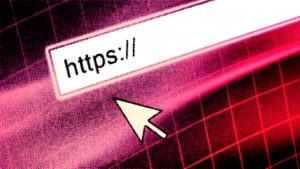Links make the Internet possible by connecting one web page to another. Without them, navigating online would be far more difficult.
They are also vitally important to search engine optimization (SEO).
Unsurprisingly, there are many types of links, each with its contribution to SEO. Generally, it’s helpful to look at both a link’s technical aspects (for technical SEO) and their non-technical aspects (for link building).
Technical SEO: Types of Hyperlinks
Technical refers to the types of links in HTML code. Think of it as the “classic” computer link definition that describes their form and function within a webpage.
Hyperlinks (<a> Links)
This is the most common link type and arguably the most important for SEO. Anytime you see clickable text that sends you to another place on the Internet, that’s a hyperlink. The majority of links used in internal linking, building backlinks, and search engine ranking all use the <a> link.
The most relevant part of a <a> tag is the anchor text where the link is embedded. This allows search engines to gauge how relevant that text is to the destination web page indicated in the “href” attribute.
Image Links
An image link is where the hyperlink is embedded within the picture instead of text. Anytime a visitor clicks on that image, it sends them to the corresponding destination. In HTML code, image links are nothing more than an <image> tag inside an <a> tag.
One of the most important parts of image links is the “alt” attribute. Web developers use this to describe the purpose and context of the image, which search engines use to determine relevance when ranking.
Rel Links
Rel links establish the relationship between the current webpage and another on the Internet. It uses the <link> tag and its associated “rel” attribute.
The most common use of rel links in SEO is for canonical tags. These tags tell search engines not to index the current page, pointing it instead to the master webpage that should be. They help identify duplicate pages, which can be problematic to SEO performance.
An example of link canonicalization is with the code: <link rel=”canonical” href=http://www.webpage.com/home.html>. This lets Google know that it should index the destination in the href instead of the current page.
Nofollow Links
A nofollow link tells search engines not to include the specified link for indexing. This is useful to optimize crawling for search engines by explicitly stating which pages to ignore. Examples include private pages, user-generated content, and paid links.
There are two ways to use nofollow links. One is by using the tag <meta name=”robots” content=”nofollow” />. When a search engine encounters this, it will ignore all links on the page. If you want to exclude on a per-link basis, you can use the rel=”nofollow” attribute in the <a> tag.
Non-technical SEO: Types of Links
Non-technical SEOs are the different types of links used for SEO purposes. They are also essential building blocks for link building, which is a fundamental SEO strategy.
Link building allows web pages to rank higher on search engines by getting high authority websites to point to them. The idea is that if a credible website refers to your website as a resource, then it must contain relevant, quality information.
Many different links impact a page’s SEO. These include:
Internal
Internal links point to other pages on the same website domain. They indirectly contribute to rankings on search engine result pages (SERPs) by making users stay on your website longer, which means search engines see your site as engaging and useful.
External
External link types are those that point to pages on another website and domain. Their purpose is to refer users to resources that will complement or further expound the content on your page.
While external links don’t directly contribute to ranking, they do help create a positive user experience. This can help drive engagement and potential ranking in the future. Plus, it opens up conversations with other website owners, including the chance to receive backlinks.
Backlinks
Backlinks, or outbound links, are one of the most effective types of linking for driving up your page ranking. Not all backlinks are the same, however, as some types carry more weight than others.
Unendorsed backlinks are the gold standard for SEO. They are freely given without you asking for it – probably because the site owner found your content relevant and valuable. The higher the authority of the website giving you the backlink, the higher your ranking could be.
The problem with unendorsed backlinks is that they’re tough to achieve. That’s where endorsed backlinks come in. This is where you actively ask for them from other website owners. There are many valid strategies for link-building campaigns, from guest posting to social mentions.
Whatever type of link you plan to use, they must be descriptive. Long URL addresses can be unreadable, which can impact your search engine ranking and indexing. Link shorteners like Bitly allow you to shorten links into any name you choose, making it look better for both users and search engines alike.
Digital & Social Articles on Business 2 Community
(67)







